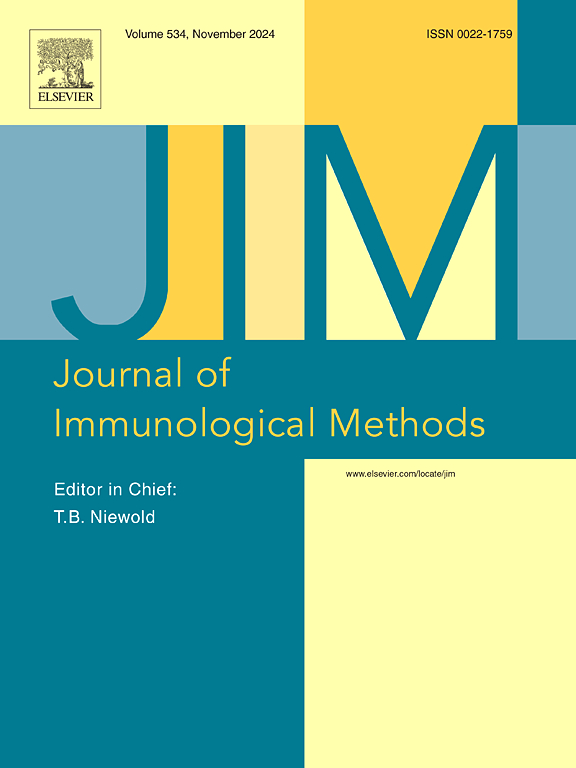MARMOT: A multifaceted R pipeline for analysing spectral flow cytometry data from subcutaneously growing murine gastric organoids
IF 1.6
4区 医学
Q4 BIOCHEMICAL RESEARCH METHODS
引用次数: 0
Abstract
The analysis of murine immune cell types is a critical component of immunological research, necessitating precise and reproducible methodologies. Here, we present a comprehensive protocol and pipeline designed to streamline the process from murine gastric organoid transplant sample preparation to figure generation. This pipeline includes a detailed staining panel tailored for murine immune cells, ensuring accurate and comprehensive identification of various cell types. Additionally, it integrates an R-based analysis script (MARMOT Pipeline), encompassing data processing and visualisation. A key feature of this pipeline is its ability to produce publication-quality figures with minimal direct R coding, thus making advanced data analysis accessible to researchers with limited programming experience. Additionally, figures can be customised using a provided Shiny application. This approach both enhances the efficiency of data analysis and enables the reproducibility required for high-quality scientific research.

MARMOT:用于分析皮下生长的小鼠胃类器官的光谱流式细胞术数据的多面R管道。
小鼠免疫细胞类型的分析是免疫学研究的重要组成部分,需要精确和可重复的方法。在这里,我们提出了一个综合的方案和管道,旨在简化从小鼠胃类器官移植样品制备到图形生成的过程。该管道包括为小鼠免疫细胞量身定制的详细染色面板,确保准确和全面地识别各种细胞类型。此外,它还集成了一个基于r的分析脚本(MARMOT Pipeline),包括数据处理和可视化。这个管道的一个关键特点是它能够用最少的直接R编码产生出版质量的数据,从而使编程经验有限的研究人员能够进行高级数据分析。此外,图形可以使用提供的Shiny应用程序进行定制。这种方法既提高了数据分析的效率,又使高质量科学研究所需的可重复性成为可能。
本文章由计算机程序翻译,如有差异,请以英文原文为准。
求助全文
约1分钟内获得全文
求助全文
来源期刊
CiteScore
4.10
自引率
0.00%
发文量
120
审稿时长
3 months
期刊介绍:
The Journal of Immunological Methods is devoted to covering techniques for: (1) Quantitating and detecting antibodies and/or antigens. (2) Purifying immunoglobulins, lymphokines and other molecules of the immune system. (3) Isolating antigens and other substances important in immunological processes. (4) Labelling antigens and antibodies. (5) Localizing antigens and/or antibodies in tissues and cells. (6) Detecting, and fractionating immunocompetent cells. (7) Assaying for cellular immunity. (8) Documenting cell-cell interactions. (9) Initiating immunity and unresponsiveness. (10) Transplanting tissues. (11) Studying items closely related to immunity such as complement, reticuloendothelial system and others. (12) Molecular techniques for studying immune cells and their receptors. (13) Imaging of the immune system. (14) Methods for production or their fragments in eukaryotic and prokaryotic cells.
In addition the journal will publish articles on novel methods for analysing the organization, structure and expression of genes for immunologically important molecules such as immunoglobulins, T cell receptors and accessory molecules involved in antigen recognition, processing and presentation. Submitted full length manuscripts should describe new methods of broad applicability to immunology and not simply the application of an established method to a particular substance - although papers describing such applications may be considered for publication as a short Technical Note. Review articles will also be published by the Journal of Immunological Methods. In general these manuscripts are by solicitation however anyone interested in submitting a review can contact the Reviews Editor and provide an outline of the proposed review.

 求助内容:
求助内容: 应助结果提醒方式:
应助结果提醒方式:


